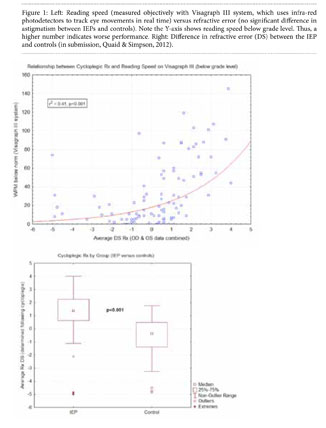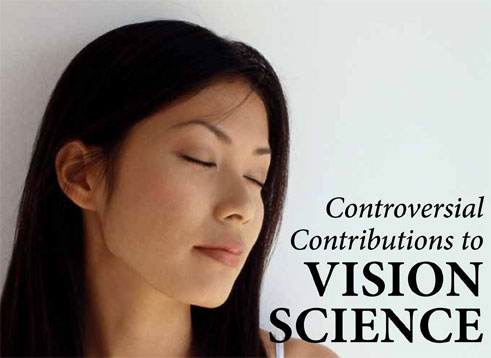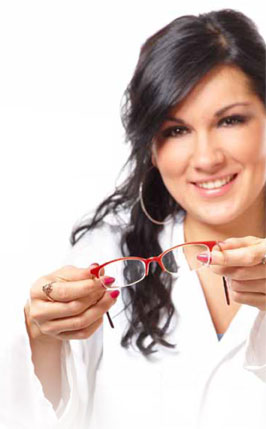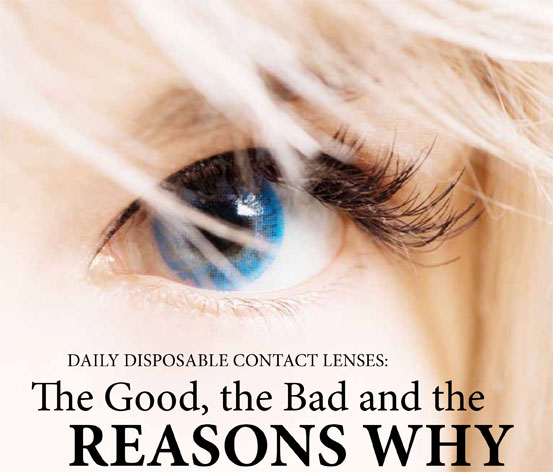By JoAnne Sommers
 When it comes to eyewear, today’s children are both seen and heard. Kids know what they want and they’re not shy about expressing it. And if they’re smart, parents and eyecare professionals (ECPs) are paying close attention.
When it comes to eyewear, today’s children are both seen and heard. Kids know what they want and they’re not shy about expressing it. And if they’re smart, parents and eyecare professionals (ECPs) are paying close attention.
“Children have much more influence on eyewear purchasing decisions than ever before,” says Beverly Suliteanu, creative director and vice president of product development for WestGroupe.
Durability used to be the primary focus of kids’ eyewear but fashion has become a much more important consideration in the past two years, she says.
“Children are adamant about wanting what their peers and idols have and if they dislike their glasses they simply won’t wear them.”
Kids are often the pickiest consumers because they’re highly trend-conscious and want to look like adults, especially their parents, says Josh Wyman, marketing coordinator with Ogi Eyewear.
“The Ogi Kid’s collection bridges the gap between fun and functional with frames that emulate those worn by adults. Today’s children are the fashion enthusiasts of tomorrow and Ogi is looking to give them a head start.”
Tastes have changed a lot in recent years. Gone are teddy bears, balloons and happy faces; in their place are cool, trendy-looking frames with an emphasis on fun colours and shapes.
V. Design’s Kids collection from Concept Eyewear has taken children’s eyewear to a whole new level with multi-dimensional frames that kids are excited to wear, says President Pille Annist. “They have the “cool” factor and the ability to express the child’s individuality,” she says.
The collection combines unexpected, unique shapes and extravagant temple details with bright, fun colours, such as white with bright purple and turquoise with orange.
“This assertive, upscale eyewear line mimics V.Design adult frames,” says Annist, who believes there’s a growing market for unique, non-mainstream children’s frames. “They’re perfect for a child or parents who are looking for something playful, fresh and stylish.”
The frames are also very sturdy, which is essential with children’s eyewear, she adds. “Quality is key because kids are so hard on their glasses.”
Children’s optical eyewear poses a major challenge for eyewear producers because the fit, weight and performance must be right to ensure that it fulfills its medical purpose while withstanding great stress. It must also look good to persuade children to wear it.
adidas kids’ eyewear offers visual appeal combined with convincing functional performance. Very light, yet robust, it adjusts to the wearer’s face thanks to soft nosepads that prevent pressure points and ensure a comfortable fit. Flexible temples always return to the correct starting position and a non-slip rubber coating on the inside of the temples ensures a secure grip.
Lafont pour les enfants from Lafont Co. offers glasses specifically designed for children’s faces, says Brand Manager Kristin Calimlim. That’s important because children’s faces are shaped differently than those of adults.
“Lafont frames enable the eyecare professional to fit each one to the specific morphology of the child,” she explains. “Our glasses are the most optically sound for kids because they’re designed for a child’s view of the world. The lens area is above the eyebrow because kids are always looking up.”
Thanks to growing awareness of the importance of protecting children’s eyes, kids’ eyewear is becoming an increasingly lucrative market, says Amanda Grant, communications director with Rudy Project.
“Consumers understand that eyewear is not just for looks,” she notes. “It provides protection against cataracts and growths on the eye, including cancer, which is why it’s so important to start protecting the eyes with sunglasses early in life. Rudy Project understands this and we’ve designed our ROB sunglass specifically to fit the faces of children and smaller-faced adults.”
The ROB is a very lightweight sunglass designed to fit small faces, making it ideal for children and smaller women. “Comfort is key with sunwear – whether for children or adults,” says Grant. And weighing in weighing at less than 0.78 oz., “the ROB is so comfortable you barely know it’s there.”
It is also fully Rx-able and comes in a variety of bright, fun colours that appeal to even the most discerning young customer.
Tips for ECPs
Here are some suggestions for ECPs who want to grow their children’s eyewear practices:
• Don’t talk down to kids, says WestGroupe’s Bev Suliteanu. Involve them in the buying process by asking about their favorite colours and find out what they like or dislike about particular frames. Be guided by their answers.
• Create a kid-friendly environment. Roberts & Brown recently renovated, adding a large, colourful, interactive kids’ rug, rainbow-coloured frame bars and vanity mirrors shaped like giant pairs of kids’ glasses.
• Take time to explain things to parents and answer their questions, says Sheena Taff, manager of Roberts & Brown Opticians in Vancouver. “They’re often worried and overwhelmed when they come in so we want to reassure them by answering all their questions and providing support.”
• Good warranties are essential with kids’ frames because they undergo so much wear and tear. Make sure the frames you sell are covered by solid warranties and instruct staff not to ask what happened to a pair of broken glasses if they’re returned. You don’t want to make either kids or parents feel bad about it.
• Discuss the importance of proper sunwear and sports goggles with parents. “Some kids lose their vision due to injuries,” Taff warns. “That’s why it’s important to educate parents about the benefits of protective eyewear.”
• Ask your adult patients whether they have children and if so, ask if their child’s eyes have been examined within the last year. Children should have their first eye examination by six months of age and every year thereafter.
WHAT’S NEW IN KIDS EYEWEAR:
Canadian Optical Supply (COS)
Collection: Lite Fit from adidas eyewear
Ages: children and teens
Features: Colourful, sporty, full-rim models; very light and robust; adjust perfectly to the wearer’s face. Flexible soft nosepads prevent pressure points and ensure comfortable fit. Flexible temples always return to correct starting position. Non-slip rubber coating on the inside of temples ensures a secure grip.
Key Models: Youth metal models a001 and a002 in brown, grey mat/black, cherry, blue jeans.
Warranty: guaranteed against manufacturer’s defects for 2 years from date of purchase.
Concept Eyewear Inc.
Collection: V. Design Kids
Ages: from 4 up; also suitable for smaller adults
Colours: white with bright purple, turquoise with bright orange, lime green
Materials: 22 stainless steel models, 2 acetate models with metal temples
Shapes: multi-dimensional with different layers; unique temple details
Special features: adjustable nosepads, durable construction
Warranty: 1 year on manufacturer’s defects.
J.F. REY
Collection: J.F. Rey Kids & Teens
Ages: 6-15
Materials: Irwin, Ibizza, Indy, Izza and Idol: acetate on the front with stainless steel on temples. Icone and Ideal: stainless steel. Impala & Iguane: nylor, with rich, refined work on the temples. Highly coloured resins on girls’ models adopt mirror effects.
Shapes: Indy, Izza and Idol: fresh, flowery designs, round or butterfly shapes.
Irwin andIbiza: modern shapes with a double bridge for boys. A wide range of colours and two-tone colours.
Warranty: 1 year from date of purchase on manufacturer’s defects.
Lafont
Collection: Lafont pour les enfants
Ages: babies to tweens
Features: babies-only styles have silicon inside, very soft and non-allergenic.
Material: acetate and silicon for babies, combination acetate and stainless steel for kids 2-12.
Features: end tips are customizable; temples have 5 mm increments and can be shortened up to 15 mm.
Silicon-based nosepads; most models have spring hinges.
Colours: bright pinks, purples, blue, green, red, tortoise, black.
Shapes: cat eyes for girls, rectangular for boys. All have a higher lens area above the eye for a children’s view of the world.
Warranty: 1 year on manufacturer’s defects.
Modo Eyewear
Collection: Eco Kids
Ages: 7-12
Features: non-toxic and hypoallergenic, featuring round temple tips and spring hinges. All made of 95 percent recycled material.
Key Models:
515: narrow retro rectangle in plastic; in brown, navy.
514: subtle, sculpted look in plastic featuring complimentary interior and exterior colours. In red, tortoise.
513: Potter-like specs with complimentary coloured rims made of stainless steel and temples in plastic. In brown, navy.
512: butterfly frames; front is stainless steel, temples are plastic and come in super-chic patterns. Topped off with the Eco icon inlaid at the temple. In brown, purple.
Warranty: 2 years from purchase date against defects in workmanship or materials.
Ogi Eyewear
Collection: Ogi Kids
Ages: 3-12
Key Models:
OK300: perfectly resembles a scaled-down version of the adult 3101. A playful cat-eye with delicate feminine flair made from Italian acetate; unique colour palette of blue, purple, red, or amber marble.
OK301: scaled-down version of adult model 9606. The keyhole bridge and neutral colour palette reflect conservative fashion. Italian acetate unites with spring hinges for long-lasting durability.
Colour: crystal/grey demi, blue demi/blue, amber demi/brown, green demi/green.
Warranty: 1 year
Optik Innovision Canada
Collection: Allegro Junior
Ages: 12-16
Shapes: square to classic ovals.
Materials: most are metal, 2 acetate.
Key Models:
474: unisex plastic frame with some texture on the front. In black and candy pink; deep purple and tangerine; evergreen and blue; navy blue and bright yellow; teal and bright purple.
473: metal with fun embellishments on the temple. In two tones of purple; black and white; chocolate and pink; dark burgundy and turquoise.
Warranty: 2-year warranty from purchase date.
Rudy Project
Collection: children’s sunwear collection consists of five models.
Ages: from 5 and up
Key model: weighing just under 0.78 oz., ROB 2.0 is the newest addition to the casual line. For those with vision correction needs, ROB 2.0 offers a highly refined RX option and broad parameters.
Warranty: Lifetime replacement lens guarantee and 3-year frame warranty.
Sunoptic
Collection: Zoobug sunwear
Ages: 4-12
Features: 100 percent UV protection.
Key Models:
DaisyChain: features a flexible temple design and robust but soft side, integrated into the temple for excellent comfort and ease-of-wear. In pink, pink/white, dark pink or lilac.
SUPER A: new interpretation of the classic Aviator in six colours: pink or purple for girls, transparent or black for boys. Slightly oversized at the front, features classic double bridge. They offer a snug fit on the sides and around the ears. In lilac/flower, pink/flower, red/flower, blue/stripe, clear/stripe or black/stripe.
BUZZBLING: in purple, pink, black and transparent. Decorated with crystals on either side of the front. Has Zoobug’s ultra-comfortable flexible temple joint.
ZB 9 WAYFARER: in lilac, black, red, red/white, pink, dark blue or lilac.
Warranty: 24-month full replacement.
Tekā Eyewear
Collection: Huveli Milano
Ages: 10-16, also fit smaller women.
Material: newest, most popular models are full plastic, adjustable, durable and lightweight.
Shapes: round, square and rectangular.
Mainly unisex, some exclusively for boys or girls.
Warranty: 1 year
Viva International
Collection: SKECHERS
Ages: 5-10, 11-16
Key Models:
SK 1030 and SK 1031: boys’ styles; SK 1030 has a metal rectangular front; SK 1031 an acetate rectangular front.
Both feature recessed horizontal detail; the raised metal SKECHERS “SKX” logo is etched on each temple.
Colours:
SK 1030: matte black/blue, satin brown, satin gunmetal/green
SK 1031: black/blue stripes, brown on orange, grey on black
Girls/Tweens
Colours: pink, magenta, purple
Material: rubber
Shapes: stars, hearts and flowers with glitter and sparkle
Boys/Tweens
Colours: black, gunmetal, blue
Shapes: Metal in half rimless shapes
Warranty: 1 year
Westgroupe
Collection: Superflex Kids
Ages: 5-12
Materials: stainless steel and acetate.
Styling direction: fun, funky and bold.
Colours: two-toned fronts and temples. Boys: navy, grey, brown, black. Girls: fuschia, teal, turquoise, red, purple, citrus.
Shapes: for boys softened rectangles and sporty ovals; for girls softened rectangles, cat eyes, modified ovals.
Features: spring hinges and lightweight material.
Warranty: 2 years for manufacturer’s defects.
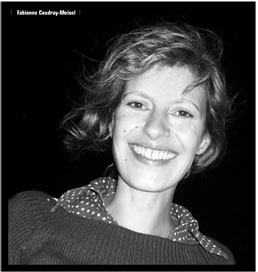 Imagine a much-loved little girl waltzing around with her mother’s hats, scarves and stoles. Imagine her mother’s delight in dressing her up for a party. Now imagine that this mother is a couturier designer with one of Spain’s most prestigious houses – Balenciaga.
Imagine a much-loved little girl waltzing around with her mother’s hats, scarves and stoles. Imagine her mother’s delight in dressing her up for a party. Now imagine that this mother is a couturier designer with one of Spain’s most prestigious houses – Balenciaga.

